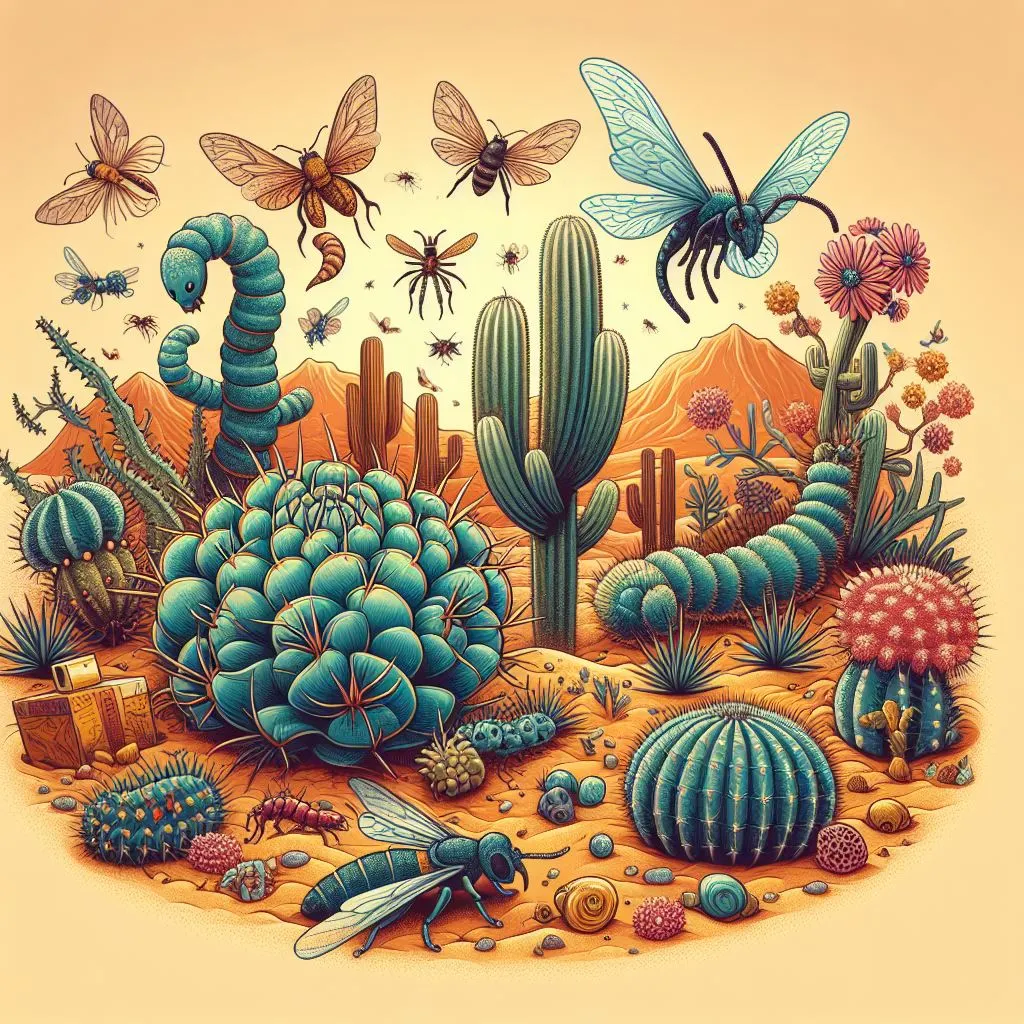Common Pests and Diseases in Desert Succulents
Introduction to Desert Succulents
Desert succulents are fascinating plants known for their ability to store water in their leaves, stems, or roots, making them well-suited for dry and arid environments. These plants have gained popularity among gardeners due to their unique shapes, sizes, and low maintenance requirements. While desert succulents are resilient, they are not immune to common pests and diseases that can affect their health and appearance. In this comprehensive guide, we will delve into the world of desert succulents and explore the various pests and diseases that can impact them, along with practical strategies for prevention and management.

Common Pests
Pests are small organisms that can cause harm to plants by feeding on their sap, leaves, or tissues. They can reproduce rapidly under favorable conditions, leading to infestations that weaken succulents over time. Three common pests that gardeners encounter with desert succulents are aphids, mealybugs, and spider mites.
Aphids: Small but Troublesome
Aphids are tiny insects that often appear in clusters on succulent leaves and stems. They feed by piercing the plant tissues and sucking out sap, which can lead to distorted growth and yellowing of leaves. Aphids are commonly found in gardens and can multiply rapidly, making them a nuisance for succulent enthusiasts.
Mealybugs: Sneaky White Invaders
Mealybugs are soft-bodied insects covered in a white, waxy substance that gives them a cottony appearance. They tend to congregate on the undersides of leaves and along stems, where they feed on plant juices. Mealybug infestations can cause leaves to yellow, wilt, and drop prematurely, affecting the overall health of succulents.
Spider Mites: Tiny but Destructive
Spider mites are minuscule arachnids that thrive in warm, dry conditions, making them common pests in desert environments. They are not true insects but belong to the spider family. Spider mites feed by piercing plant cells and extracting fluids, leading to stippling (tiny yellow or white spots) on leaves and fine webbing on plants. Heavy infestations can cause leaves to become discolored and eventually die off.
Identifying Pest Problems
Early detection of pest infestations is crucial for preventing widespread damage to succulents. Signs of pest problems include:
- Sticky residues (honeydew) on leaves or stems.
- Curling, yellowing, or distorted leaves.
- Tiny webs or webbing on plant surfaces.
- Small crawling insects visible on plants.
Regularly inspect your succulents for these signs, especially in areas where pests are likely to hide, such as leaf undersides and stem joints.
Preventing Pests
Maintaining healthy succulents is key to preventing pest infestations. Here are some preventive measures you can take:
- Optimal Growing Conditions: Provide adequate sunlight according to the succulent species, well-draining soil, and appropriate watering (avoid overwatering).
- Physical Barriers: Use fine mesh screens or netting to prevent pests like aphids and spider mites from accessing your plants.
- Natural Predators: Encourage beneficial insects like ladybugs and lacewings that prey on aphids and other pests.
- Neem Oil or Soapy Water Sprays: Apply diluted neem oil or insecticidal soap sprays to deter pests while minimizing harm to beneficial insects.
By implementing these strategies, you can create an environment that discourages pest activity and promotes succulent health.
Common Diseases
In addition to pests, succulents are susceptible to various diseases caused by fungal, bacterial, or viral pathogens. Understanding these diseases and their symptoms is essential for effective management.
Root Rot: The Silent Killer
Root rot is a fungal disease caused by overly moist conditions, poor soil drainage, or overwatering. It leads to the decay of succulent roots, resulting in wilting, yellowing, and eventual collapse of the plant. Prevent root rot by using well-draining soil mixes and avoiding excessive watering.
Powdery Mildew: A Fuzzy Menace
Powdery mildew is a fungal infection characterized by white, powdery growth on succulent leaves and stems. It thrives in humid environments and can spread rapidly, especially in crowded plantings. Improve air circulation around your succulents, and avoid overhead watering to reduce powdery mildew risk.
Leaf Spot: Brown Spots on Leaves
Leaf spot diseases, caused by various fungi or bacteria, manifest as brown or black spots on succulent leaves. These spots may enlarge and merge, leading to leaf yellowing and premature drop. Maintain proper spacing between plants, prune affected leaves promptly, and avoid overhead watering to minimize leaf spot occurrence.
Recognizing Disease Symptoms
To identify succulent diseases early, watch for the following symptoms:
- Wilting, yellowing, or browning of leaves.
- White powdery or fuzzy growth on plant surfaces.
- Brown or black spots on leaves, often with concentric rings.
Regularly inspect your succulents, especially during periods of high humidity or after heavy rainfall, to catch disease symptoms promptly.
Managing Succulent Diseases
Effective disease management involves a combination of cultural practices and, in severe cases, targeted treatments. Here are key strategies for managing succulent diseases:
- Proper Watering: Water succulents only when the soil is dry to the touch, and ensure containers have drainage holes to prevent waterlogged conditions.
- Sanitation: Remove and dispose of infected plant parts promptly to prevent disease spread.
- Pruning: Trim affected leaves and stems using sanitized tools to prevent cross-contamination.
- Fungicides: In severe cases, apply fungicidal treatments labeled for succulents, following instructions carefully to avoid plant damage.
Conclusion
In conclusion, maintaining healthy desert succulents involves vigilance against pests and diseases while providing optimal growing conditions. Regular monitoring, early detection, and proactive management practices are the pillars of succulent care. By understanding the common pests and diseases outlined in this guide and implementing preventive and remedial measures, you can enjoy thriving succulent displays in your home or garden. Happy gardening!